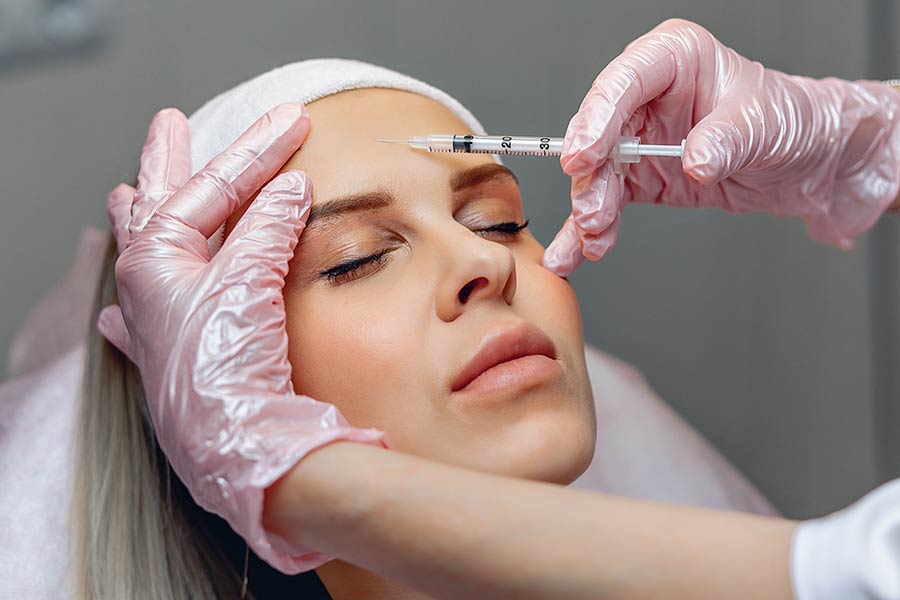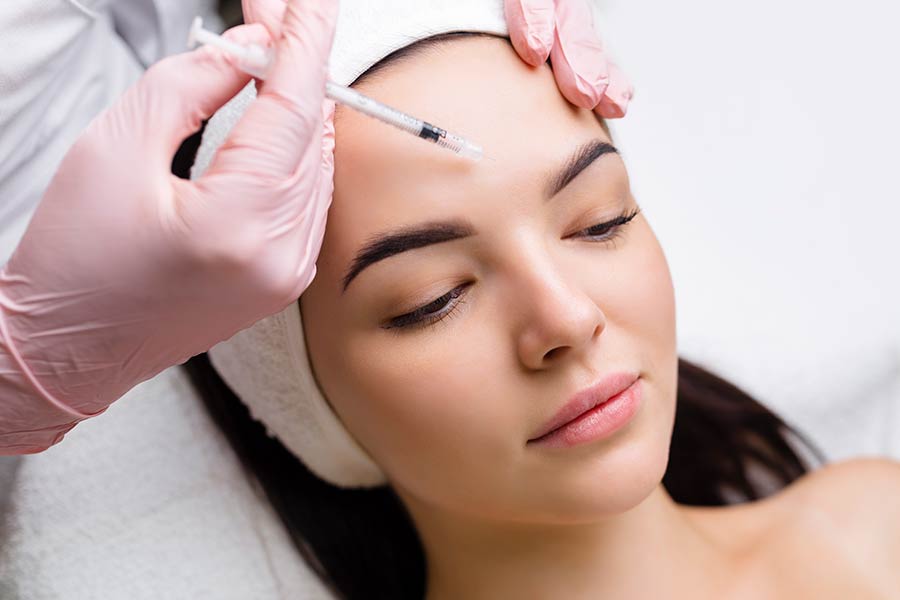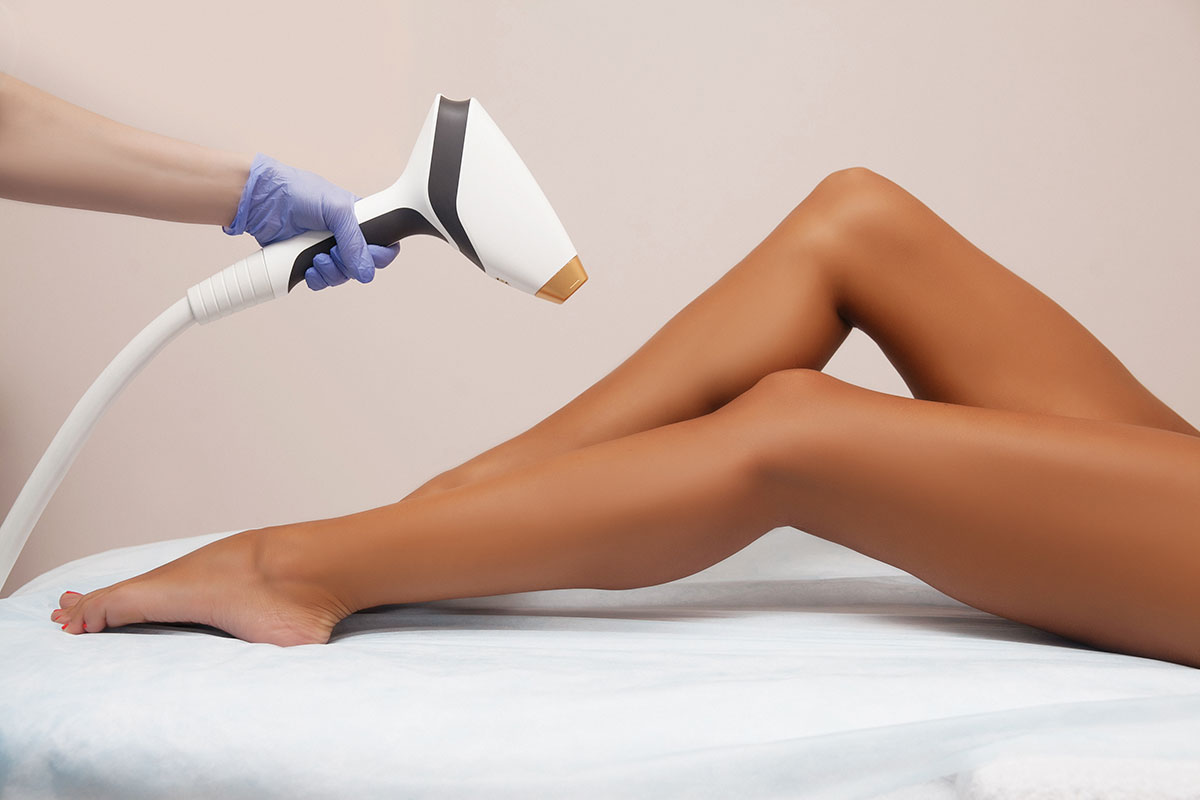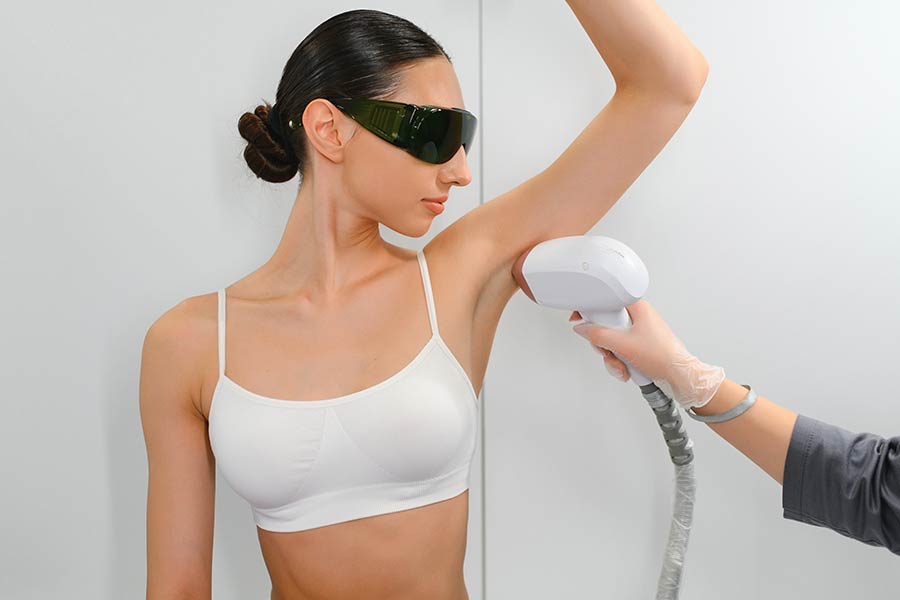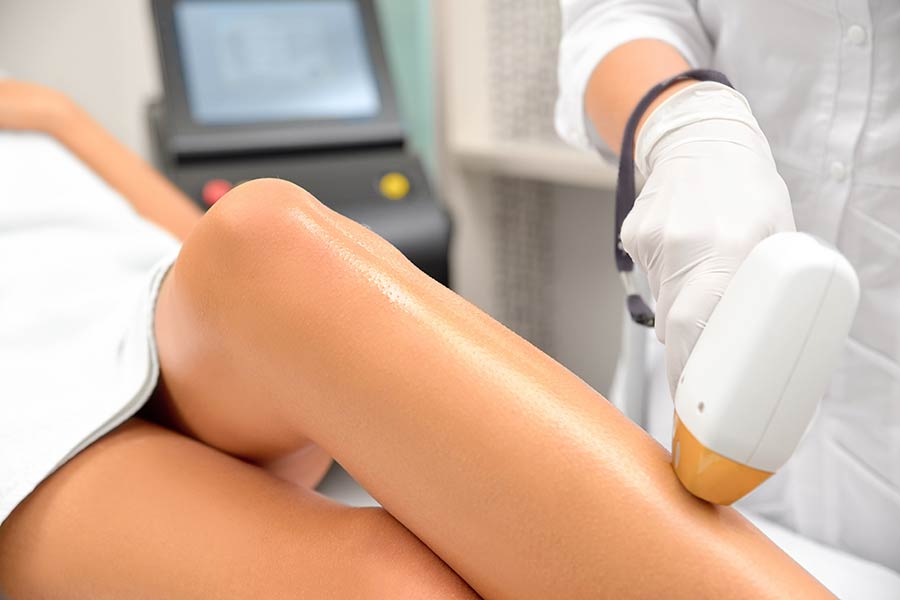Nearly 7 million people receive Botox treatments each year, making it one of the most popular non-surgical cosmetic procedures worldwide. But while many are drawn to its promise of a more youthful appearance, few stop to consider the potential side effects. Botox, though widely regarded as safe when administered by a qualified professional, can come with a range of side effects from mild to severe. From temporary bruising and discomfort at the injection site to more unusual complications like drooping eyelids or difficulty swallowing, understanding these possible outcomes is crucial. This post aims to shed light on the less talked about aspects of Botox treatments, helping you make an informed decision before taking the plunge.
Key Takeaways
- Botox can cause some common side effects like swelling or bruising, but these usually go away on their own.
- Rare but serious complications can happen, so always tell your doctor about any health issues you have.
- You can manage most side effects at home with simple care, like using ice packs or taking it easy.
- Seeing a trained and experienced professional for your Botox treatment is super important to lower risks.
- Get ready for your treatment by following your doctor's advice on what to do before and after.
- If you're worried about side effects, talk to your doctor about other ways to look younger or feel better without using Botox.
Understanding Botox
Treatment Purpose
Botox works by temporarily paralyzing muscles. This action helps reduce the appearance of wrinkles. It blocks signals from nerves to muscles. Without these signals, muscles don't contract. This makes wrinkles relax and soften.
Botox is not just for cosmetic use. It also treats medical conditions like chronic migraines. For those suffering from severe headaches, Botox can offer relief. The treatment involves multiple injections around the head and neck every 12 weeks.
The benefits of Botox are both cosmetic and therapeutic. People appreciate its ability to smooth wrinkles and lessen headache pains. These dual benefits make Botox a popular choice for many.
Injection Process
The injection process uses fine needles. These needles target specific areas with precision. The goal is to relax only the muscles causing wrinkles or pain.
The procedure is quick and done as an outpatient service. Patients can leave immediately after receiving their injections.
A skilled practitioner's role cannot be overstated. They ensure the treatment is safe and effective. Their expertise minimizes risks and maximizes results.
Expected Results
Visible improvements appear within a few days to two weeks post-treatment. However, it's important to know that results are temporary, typically lasting 3-6 months.
The duration of Botox effects varies from person to person due to individual factors like metabolism and muscle strength.
Patients should have realistic expectations about outcomes. Not everyone will experience the same level of improvement.
Common Side Effects
Immediate Reactions
After learning about Botox and its uses, it's essential to understand the immediate reactions that can occur. One might notice redness or swelling at the injection sites. This is a common response as the body adjusts to the treatment. Mild bruising is also a possibility. These signs are your body's natural reaction to the needle and the substance being introduced.
However, these reactions are generally short-lived. Most people see these symptoms fade within a few days. It's important to keep the treated area clean and avoid rubbing or pressing it too hard during this time.
Short-term Effects
Beyond the initial reactions, there are some short-term effects that recipients should be aware of. Headaches or flu-like symptoms may develop after receiving Botox treatments. This can happen as the body reacts not just to the physical injections but also to the botulinum toxin itself.
A rare but notable side effect is eyelid droop. This occurs when Botox affects areas beyond the intended muscles. If you notice any unusual side effects, such as difficulty breathing or swallowing, contact your healthcare provider immediately.
Monitoring for any unexpected reactions in the weeks following your treatment is crucial. Most side effects are mild and resolve on their own, but staying informed helps manage any potential risks effectively.
Rare Complications
Health Risks
While Botox is widely considered safe, it carries rare but serious risks. One such risk involves the botulinum toxin spreading to parts of the body beyond the injection site. This can lead to symptoms reminiscent of botulism, a severe form of food poisoning. Patients may experience muscle weakness, difficulty swallowing, or even breathing difficulties. These symptoms can emerge hours to weeks after the treatment.
It's crucial for individuals to share their full medical history with their provider before undergoing Botox treatments. Disclosing all health conditions helps minimize risks and ensures a safer procedure. The importance of this step cannot be overstated, as it significantly reduces the likelihood of complications.
Long-term Impact
Concerns about the long-term impact of Botox are common among prospective patients. A notable worry is that repeated use might lead to diminished results over time. This occurs as some individuals develop antibodies against the toxin, making future treatments less effective.
Contrary to popular belief, there's no concrete evidence suggesting that long-term Botox use causes skin damage. In fact, many experts argue that by reducing muscle activity, Botox may help in preventing some signs of aging.
However, the need for more research on very long-term effects remains. While current studies support Botox's safety profile over several years, understanding its impact over decades requires further investigation. Patients seeking repeated treatments should discuss potential long-term implications with their healthcare provider.
Managing Side Effects
Post-Treatment Care
After receiving Botox injections, proper care is crucial to minimize side effects and maximize results. One key recommendation is to avoid touching or rubbing the treated areas. This simple step can prevent the Botox from spreading to unintended muscles.
Staying upright for at least four hours post-injection helps the Botox stay in place. It ensures that the treatment works as intended without migrating.
Patients should also take it easy and skip any strenuous activities for 24 hours. This means no heavy lifting, vigorous exercise, or anything that could increase blood flow to the face too much. Such precautions help reduce swelling and bruising.
When to Seek Help
While most side effects are mild and temporary, some situations require immediate attention. If someone experiences difficulty breathing or swallowing after their treatment, they must consult a healthcare provider right away. These symptoms can indicate a serious reaction that needs quick intervention.
Prompt medical attention becomes essential when facing unusual or severe side effects. Not all reactions are common, and recognizing when something isn't right is crucial for health and safety.
It's also important for patients to feel comfortable contacting their provider with any concerns post-treatment. Even if an issue seems minor, getting professional advice can provide peace of mind and ensure everything is progressing as expected.
Importance of Professional Guidance
Choosing a Provider
Selecting the right professional for Botox treatments is crucial. A licensed and experienced practitioner ensures safety and effectiveness. They understand the nuances of facial anatomy and can administer injections correctly. This reduces the risk of complications.
Seek recommendations from friends or family who have had successful treatments. Reading online reviews can also offer insights into a provider's reputation. It's important to research thoroughly before making a decision.
Check the provider's credentials carefully. Look for certifications in dermatology or cosmetic surgery. Reviewing before-and-after photos of previous patients can give you an idea of their skill level. This step is key to finding a trustworthy practitioner.
Pre-Treatment Consultation
A thorough pre-treatment consultation is vital. Discuss your medical history and any medications you're taking with your provider. This helps identify any potential risks specific to your health background.
Asking about the possible side effects and benefits prepares you mentally and physically for the procedure. It's essential to have realistic expectations about what Botox can achieve. Clarify these with your provider to ensure you're on the same page regarding treatment goals.
Discussing your expectations openly allows for a tailored treatment plan that meets your needs. This conversation also builds trust between you and your provider, which is fundamental for a successful outcome.
Preparing for Treatment
Steps Before Injection
Before getting Botox, taking certain steps can ensure a smoother experience and minimize potential side effects. First, it's crucial to avoid blood-thinning medications such as aspirin and ibuprofen for at least a week before your appointment. These substances can increase the risk of bruising at the injection sites.
Smoking can delay healing and might affect the outcome of your Botox treatment. Therefore, it's advisable to stop smoking several days before the procedure. This simple change can promote better healing and potentially enhance the results.
Staying hydrated and ensuring you're well-rested before receiving Botox injections are also recommended. Proper hydration and rest can prepare your body for treatment, helping it to recover more efficiently afterward.
During the Session
Once you arrive for your Botox session, the healthcare provider will clean and mark the areas targeted for injection. This preparation is essential for precise application and optimal results. The use of ice packs or topical numbing cream may be offered to minimize discomfort during the procedure. These measures are especially helpful for individuals with a low pain threshold or those feeling anxious about needles.
The actual injection process is quick, typically taking less than 30 minutes from start to finish. The efficiency of the session largely depends on the number of areas being treated and how well-prepared you are beforehand.
Mitigating Risks
Safety Measures
To avoid unwanted side effects of Botox, choosing FDA-approved products is crucial. These products meet strict safety standards. They ensure the treatment's effectiveness and safety. It's important to verify that the provider uses only these approved items.
Using sterile equipment and a clean environment is non-negotiable. It prevents infection and ensures a safe procedure. Make sure the clinic follows high hygiene standards.
Following the provider's aftercare instructions is key to a smooth recovery. These guidelines help minimize risks and promote healing. Ignoring them can lead to complications.
Post-Procedure Tips
Applying a cold pack can significantly reduce swelling after Botox injections. This simple step helps soothe the treated area. It makes recovery more comfortable.
Gentle facial exercises are beneficial. They help distribute Botox evenly across the treatment area. But, it's important not to overdo it. Follow your provider’s advice on specific exercises.
Scheduling a follow-up appointment is essential for assessing results. It allows your provider to check how well the Botox has worked. They can make any necessary adjustments during this visit.
Exploring Alternatives
Other Treatments
When considering how to manage skin aging and wrinkles, comparing Botox to other treatments reveals a range of options. Fillers, for instance, offer a different approach. Unlike Botox, which relaxes muscles, fillers add volume. This makes them better suited for deep wrinkles and areas like cheeks and lips.
Laser treatments present another alternative. They work by resurfacing the skin, which can reduce the appearance of fine lines and scars. Laser therapy is especially effective for those looking for significant improvements in skin texture without injections.
Chemical peels are yet another option. They improve skin texture by removing the outermost layers of the skin. This process encourages new, smoother skin to grow in its place. Chemical peels vary in strength and can be tailored to address specific concerns like age spots or fine lines.
Natural Solutions
In addition to medical treatments, natural solutions can play a crucial role in preventing and managing wrinkles. Facial exercises, for example, strengthen facial muscles. Over time, this can help reduce the appearance of fine lines.
A diet rich in antioxidants also supports skin health. Foods like berries, nuts, and green leafy vegetables help protect the skin from damage that leads to aging.
Regular sunscreen use is perhaps one of the most effective ways to prevent premature aging. It protects the skin from harmful UV rays that accelerate the breakdown of collagen, leading to wrinkles and sagging skin.
Summary
Botox offers a way to look fresher and more youthful, but it's not without its risks. You've seen the common side effects, rare complications, and how to manage them. It's clear that professional guidance is key. Before jumping in, knowing what you're signing up for—from preparing for treatment to exploring alternatives—can save you a lot of headaches. Literally.
Choosing Botox is a big decision. Make sure you weigh the pros and cons, understand the potential side effects, and consult with a pro. Your health and safety come first. Ready to take the next step or looking for more info? Reach out to a healthcare provider today. Let's make sure your journey with Botox is safe and satisfying.
Frequently Asked Questions
What are the common side effects of Botox?
Most people experience mild side effects like bruising, swelling, or redness at the injection site. Temporary headaches and flu-like symptoms can also occur but usually resolve quickly.
Can Botox cause any rare complications?
Yes, though rare, complications such as difficulty breathing, swallowing, or speaking can occur. These require immediate medical attention.
How can I manage the side effects of Botox?
Simple measures like applying ice to reduce swelling and avoiding rubbing the treated area can help manage side effects effectively.
Why is professional guidance important for Botox treatments?
Professional guidance ensures the correct dosage and injection sites are used, minimizing risks and optimizing results safely.
What should I do to prepare for Botox treatment?
Avoiding blood-thinning medications and alcohol before treatment can reduce bruising. Discussing your medical history with your provider is also crucial.
How can I mitigate risks associated with Botox?
Choosing a qualified and experienced practitioner and following pre- and post-treatment instructions closely can significantly mitigate risks.
Are there alternatives to Botox for anti-aging?
Yes, alternatives include topical creams, chemical peels, laser treatments, and dermal fillers, each with its own set of benefits and considerations.




